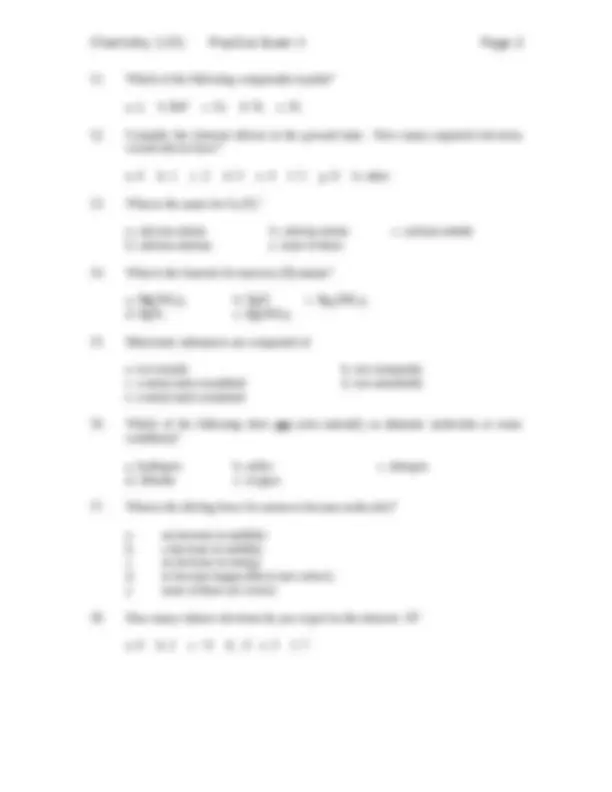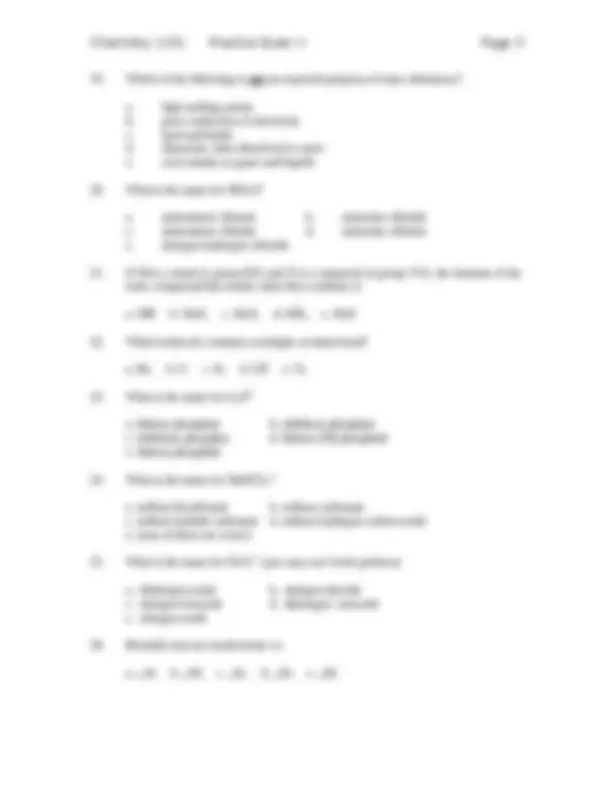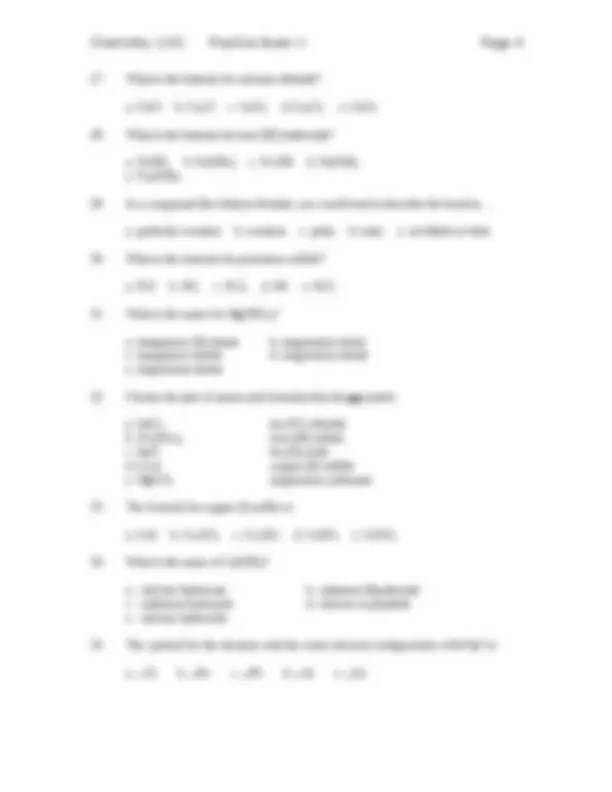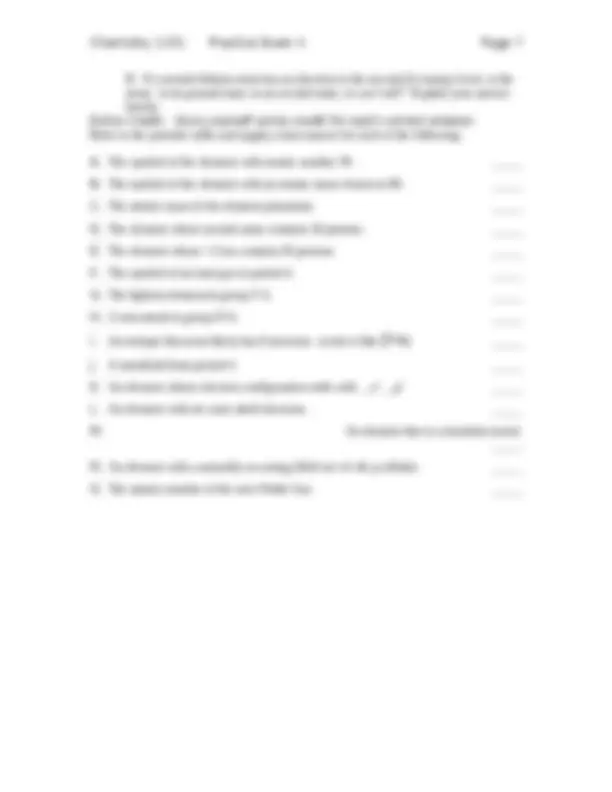






Study with the several resources on Docsity

Earn points by helping other students or get them with a premium plan


Prepare for your exams
Study with the several resources on Docsity

Earn points to download
Earn points by helping other students or get them with a premium plan
Community
Ask the community for help and clear up your study doubts
Discover the best universities in your country according to Docsity users
Free resources
Download our free guides on studying techniques, anxiety management strategies, and thesis advice from Docsity tutors
Material Type: Exam; Class: Survey of Chemistry I; Subject: Chemistry; University: Clayton State University; Term: Unknown 2006;
Typology: Exams
1 / 8

This page cannot be seen from the preview
Don't miss anything!





Name___________________________________ This practice exam is designed just like a second exam for the course. You should attempt this exam without the use of notes, books, or help and you should give yourself only the amount of time equal to the class time. When finished, grade your exam using the exam answers, but do not look at the answers before you attempt the exam. You should then be able to tell how well prepared you are for the second exam of the course. Use this as an evaluation tool to help you decide on a withdrawal decision if our second exam should be after the drop date. Good luck, let me know if I can be of any assistance.
Who first proposed the quantum theory (electron energy shells) of hydrogen atoms? a. Bohr b. Rutherford c. Dalton d. Thompson
Consider an ion with the symbol X+3^ from the representative elements. This element would most likely be a member of group… a. I b. II c. III d. IV e. V f. other
Element #117 has not yet been synthesized or discovered. Which group on the periodic table would element #117 belong to? a. IA b. IIA c. VIA d. VIIA e. VIIIA
Both Al+3^ and F¯ are isoelectronic as what Noble Gas? a. 2 He b. 10 Ne c. 18 Ar d. 36 Kr e. 54 Xe
Which member of group VIA of the periodic table is the most nonmetallic? a. 8 O b. 16 S c. 34 Se d. 52 Te e. 84 Po
Which of the following corresponds to the outer electronic configuration of the element with an atomic number of 15? a. 2s^2 2p^4 b. 3s^2 3p^3 c. 2s^2 2p^3 d. 1s^2 2s^2 2p^6 3s^2 e. none of these
If three electrons are gained by an arsenic atom, 33 As, it would be isoelectronic to: a. 20 Ca b. 36 Kr c. 35 Br d. 19 K e. 30 Zn
How many protons would be found in the nucleus of Rb 85 37? a. 37 b. 85 c. 48 d. 29 e. 53
An ion contains 14 protons, 16 neutrons, and 17 electrons. The charge on the ion is: a. -2 b. +2 c. -3 d. +3 e. other
An atom that loses an electron becomes: a. an ion b. a different element c. a different isotope d. worried e. atoms cannot lose electrons and be the same element
a. s b. p c. d d. f e. g
B. If a neutral lithium atom has an electron in the second (L) energy level, is the atom: in its ground state; in an excited state; or can’t tell? Explain your answer briefly Extra Credit: Give yourself extra credit for each correct answer. Refer to the periodic table and supply a best answer for each of the following: A. The symbol of the element with atomic number 39. _____ B. The symbol of the element with an atomic mass closest to 80. _____ C. The atomic mass of the element potassium. _____ D. The element whose neutral atom contains 30 protons. _____ E. The element whose +2 ion contains 30 protons. _____ F. The symbol of an inert gas in period 4. _____ G. The lightest element in group VA. _____ H. A non-metal in group IVA. _____ I. An isotope that most likely has 8 neutrons. (write it like He 4 2 )^ _____ J. A metalloid from period 4. _____ K. An element whose electron configuration ends with __s^2 __p^2 _____ L. An element with six outer shell electrons. _____ M. An element that is a transition metal.
N. An element with a naturally occurring filled set of s & p orbitals. _____ O. The atomic number of the next Noble Gas. _____